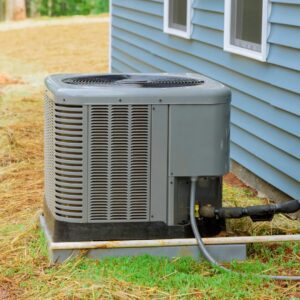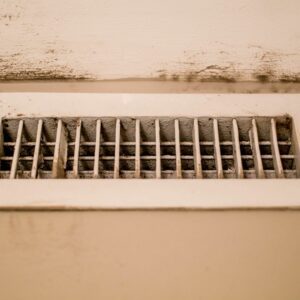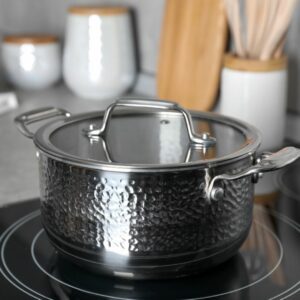As advocates for healthier indoor environments, we are committed to helping you achieve optimal air quality in every indoor setting. Understanding how air quality works and how to improve it, beyond purchasing an air purifier, can be perplexing. In specific scenarios, such as office spaces, recognizing subpar air quality might be apparent, even if you’re not directly responsible for the remedy. In this article, we will review five cost-free strategies that anyone can adopt to kickstart the journey toward breathing cleaner and healthier air.
1. Assess Your External Air Sources
The leading contributor to  poor indoor air quality is poor outdoor air. Approximately 20% of the air you breathe in residences with shared walls can be traced back to neighboring spaces. Identify the entry points of external air, whether it’s a dedicated air supply or a doorway, can be sources of indoor air pollution. For instance, individuals storing garbage cans close to their air intake inadvertently invite contaminants into their living spaces. Similarly, we recently visited a homeowner who was experiencing persistent headaches. Upon investigation, we identified that storing chemicals within an attached garage during sweltering summer months exacerbated indoor air quality by elevating volatile organic compounds (VOCs) whenever the garage door was opened.
poor indoor air quality is poor outdoor air. Approximately 20% of the air you breathe in residences with shared walls can be traced back to neighboring spaces. Identify the entry points of external air, whether it’s a dedicated air supply or a doorway, can be sources of indoor air pollution. For instance, individuals storing garbage cans close to their air intake inadvertently invite contaminants into their living spaces. Similarly, we recently visited a homeowner who was experiencing persistent headaches. Upon investigation, we identified that storing chemicals within an attached garage during sweltering summer months exacerbated indoor air quality by elevating volatile organic compounds (VOCs) whenever the garage door was opened.
2. Clear and Maintain Internal Ventilation Systems
 Proper ventilation is pivotal for maintaining a steady supply of fresh air within inhabited spaces. Ventilation can (see #5) aid in diluting pollutants and enhancing air quality, especially in addressing elevated carbon dioxide (CO2) levels that can accumulate in crowded rooms. Some structures, while well-designed for ventilation prior to occupation, may encounter airflow disruptions or blockages when fully utilized. Consider a scenario where an object obstructs a vent during a gathering, limiting air circulation. This blockage could lead to stagnant air if it remains there for several days. Identifying and safeguarding supply and return air pathways is crucial to ensure unobstructed airflow.
Proper ventilation is pivotal for maintaining a steady supply of fresh air within inhabited spaces. Ventilation can (see #5) aid in diluting pollutants and enhancing air quality, especially in addressing elevated carbon dioxide (CO2) levels that can accumulate in crowded rooms. Some structures, while well-designed for ventilation prior to occupation, may encounter airflow disruptions or blockages when fully utilized. Consider a scenario where an object obstructs a vent during a gathering, limiting air circulation. This blockage could lead to stagnant air if it remains there for several days. Identifying and safeguarding supply and return air pathways is crucial to ensure unobstructed airflow.
3. Healthier Cooking Habits for Better Air Quality
 While the benefits of maintaining a balanced diet are well-known, it’s worth noting that your cooking methods can also significantly impact indoor air quality. Recent attention has been directed toward the air quality implications of gas stoves, yet how you cook holds equal importance. Cooking techniques, particularly frying, can release smoke and VOCs, diminishing air quality. A practical solution is to employ lids while cooking to mitigate these effects and enhance the overall air quality within your space.
While the benefits of maintaining a balanced diet are well-known, it’s worth noting that your cooking methods can also significantly impact indoor air quality. Recent attention has been directed toward the air quality implications of gas stoves, yet how you cook holds equal importance. Cooking techniques, particularly frying, can release smoke and VOCs, diminishing air quality. A practical solution is to employ lids while cooking to mitigate these effects and enhance the overall air quality within your space.
4. Minimize VOC-Heavy Fragrances
 Commonly used fragrances, including candles and perfumes, can inadvertently contribute to diminished air quality. Candles emit particulate matter, VOCs, and smoke, while the chemicals found in perfumes can release VOCs and potentially trigger allergies. For those fond of candles, opting for natural alternatives and ensuring proper ventilation can reduce their impact on air quality. Likewise, when selecting perfumes, select products containing organic ingredients, as they are less likely to affect others’ quality than synthetic counterparts.
Commonly used fragrances, including candles and perfumes, can inadvertently contribute to diminished air quality. Candles emit particulate matter, VOCs, and smoke, while the chemicals found in perfumes can release VOCs and potentially trigger allergies. For those fond of candles, opting for natural alternatives and ensuring proper ventilation can reduce their impact on air quality. Likewise, when selecting perfumes, select products containing organic ingredients, as they are less likely to affect others’ quality than synthetic counterparts.
5. Thoughtful Indoor Air Dilution (with Caution)
While dilution is often considered a simple and method effective method to improve air quality it should be used with some caution. Dilution is simply increasing airflow from less contaminated spaces. In air quality terms, this typically means adding more outdoor air. We advise doing this with caution, specifically if you are unsure about outdoor air quality. For example, at the time of release, Canadian wildfires have been ongoing for months. Opening windows and improving airflow will not improve air quality and have an adverse effect.
These strategies are ones that anyone can take advantage of in almost any indoor space. Of course, the simplest way to improve air quality is through an air purification device that follows the principles of UVGI and directional airflow.






